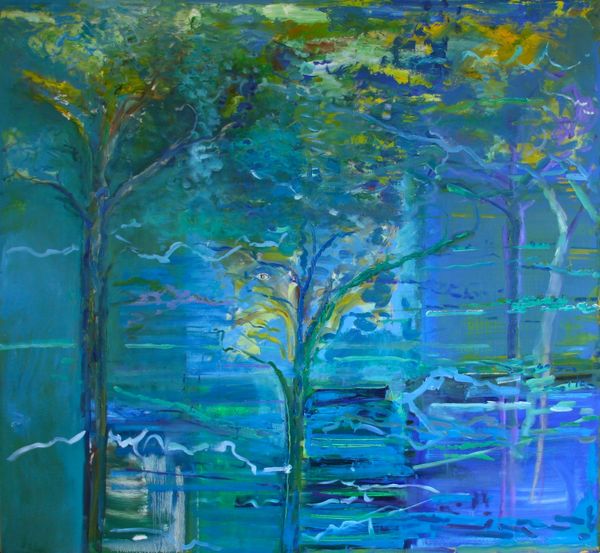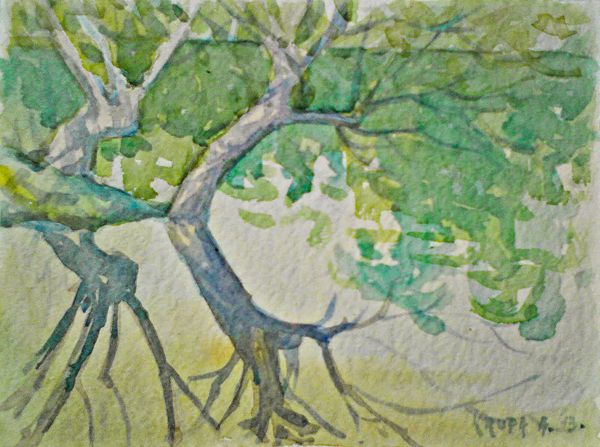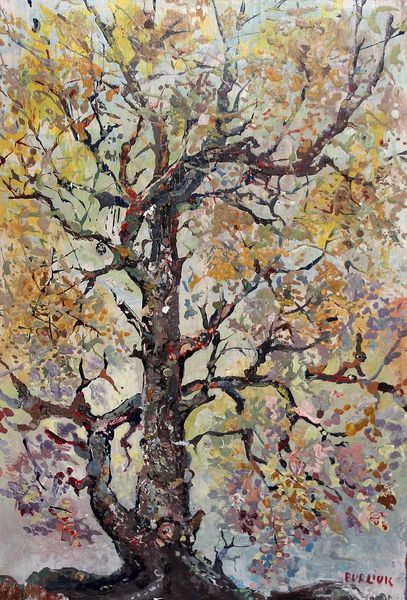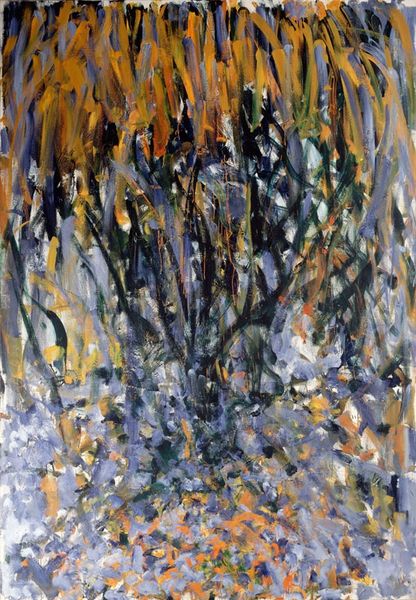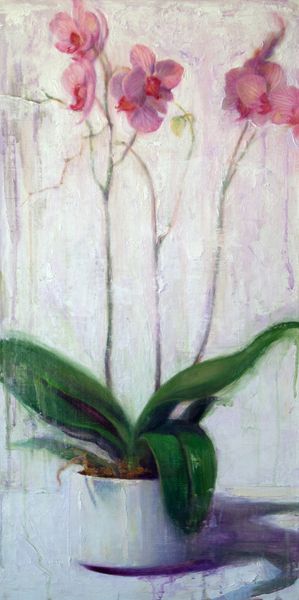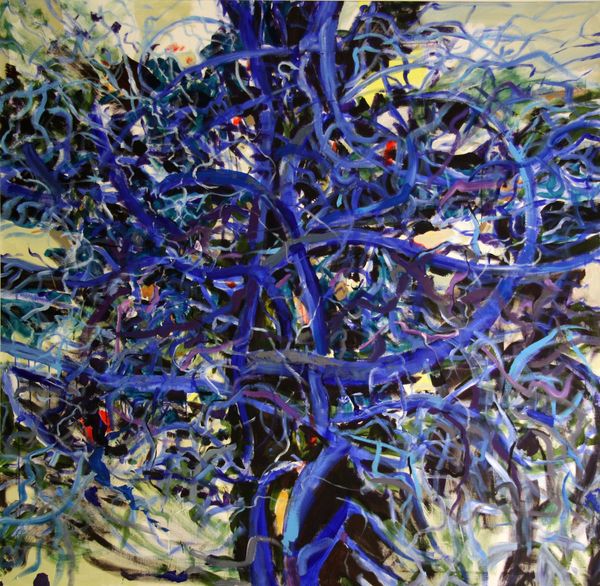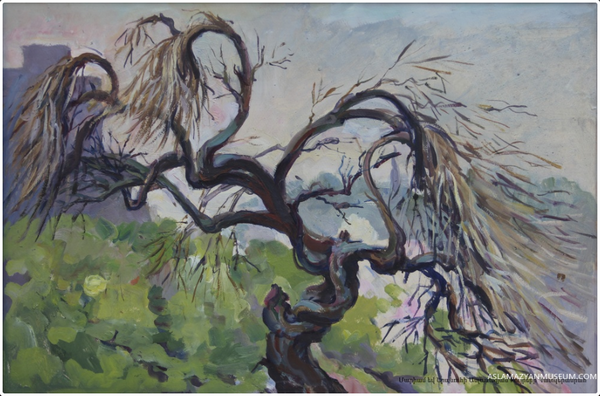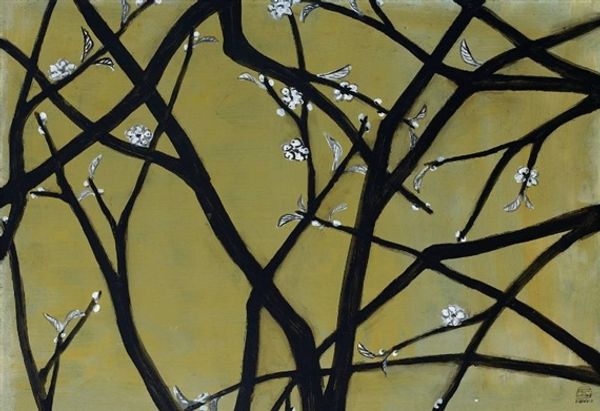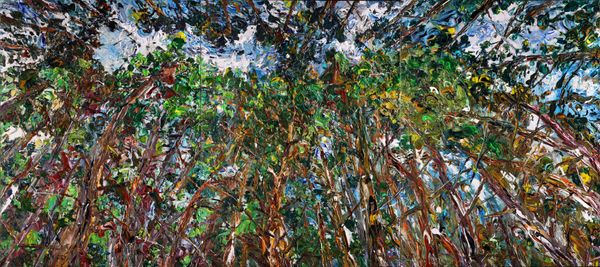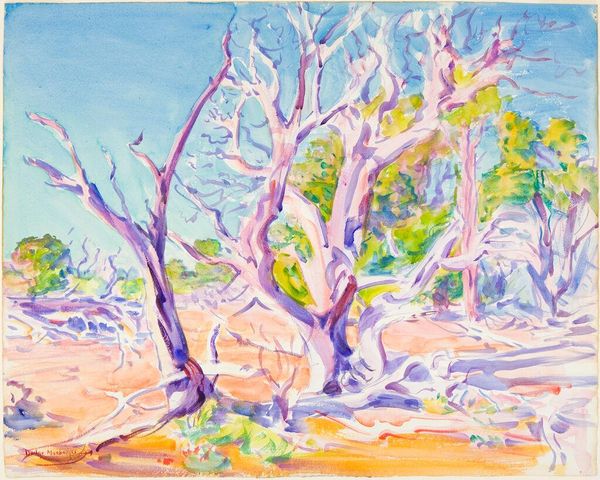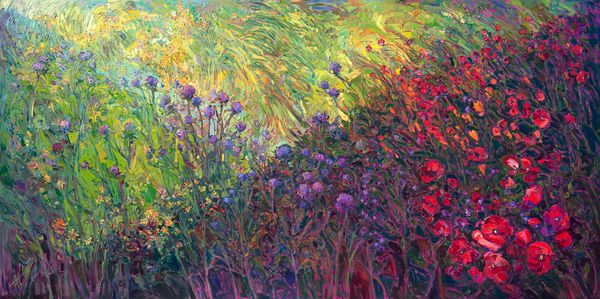
painting, oil-paint
#
abstract expressionism
#
organic
#
painting
#
oil-paint
#
landscape
#
oil painting
#
geometric
#
abstraction
#
modernism
Copyright: Georgia O'Keeffe,Fair Use
Editor: So here we have Georgia O’Keeffe’s "Spring Tree No. 1" from 1945, rendered in oil paint. There’s a lightness and energy to the colours and the composition makes it feels expansive, despite the focus on this single tree. As someone deeply attuned to symbolism, how do you interpret this work? Curator: I’m drawn to how O'Keeffe renders the tree—it's less a botanical study, and more an emblem. What is a tree, really, but a symbol of life, of growth, of reaching for the heavens while being firmly rooted in the earth? This tree, in particular, seems to capture a post-war sense of optimism. It visually speaks of resilience. Editor: I can see that! It’s like the tree itself becomes a hopeful figure. Do you think O’Keeffe was conscious of this symbolic weight when she was painting? Curator: I think she understood the power of simplification, the ability of a form, abstracted just so, to hold immense emotional resonance. Consider also the context—painted in 1945, the year the Second World War ended. Can't we see this as an assertion of life's persistent renewal after a period of immense global trauma? Editor: That gives the painting a whole new layer. Seeing it now, I realize there is more strength, more fortitude there, than I initially understood. Curator: Exactly. O'Keeffe's choice isn't accidental; the image carries an emotional and cultural memory of both loss and hope. It encourages us to remember and build anew. Editor: That’s fascinating. I'll definitely look at O’Keeffe differently from now on. Curator: And hopefully you'll look at the world around you with an eye to what it might symbolize.
Comments
No comments
Be the first to comment and join the conversation on the ultimate creative platform.
